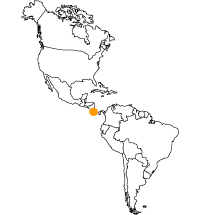Protected Areas in Costa Rica
According to article 58 of the Law on Biodiversity no. 7788, protected areas (Áreas Silvestres Protegidas) are "geographically delimited areas consisting of lands, wetlands, and stretches of sea. They have been declared 'protected areas' for the importance of their ecosystems, the presence of threatened species, their influence on the reproduction processes, and their historical and cultural value. These areas are dedicated to the conservation of biodiversity, soil, water resources, cultural heritage, and ecosystem services in general".
The creation, conservation, management, development, and surveillance of protected areas pursue the following aims:
- preserving representative natural environments of the different biogeographical regions and most fragile ecosystems, to assure balance and continuity to the evolutionary and ecological processes
- safeguarding the genetic diversity of the wildlife species on which the evolutionary continuity depends, in particular endemic, threatened, and dying out species
- assuring the sustainable use of the ecosystems and their elements, promoting the active participation of the neighboring communities
- promoting scientific research, the study of the ecosystems and their balance, as well as the knowledge and technologies enabling the sustainable use of the natural resources of the Country and their conservation
- safeguarding and enhancing the water bearing layers and the water basins in order to reduce and avoid the negative impacts that may derive from a poor management
- protecting the natural and landscape features of historical and architectural sites and centers, national monuments, archaeological sites, and places of historical and artistic value of great importance for our culture and national identity.
Source: Sistema Nacional de Areas de Conservación de Costa Rica
|


